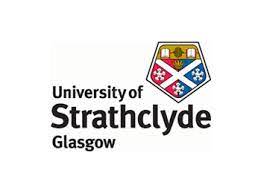University of Strathclyde: Alter Technology opens Photonics Design Centre in Technology & Innovation Centre
Alter Technology TUV Nord has opened a Photonics Design Centre in Glasgow, at the University of Strathclyde, to accelerate the commercialisation of photonic products into quantum technology and space markets.
The Centre, based in Strathclyde’s Technology & Innovation Centre (TIC) in Glasgow City Innovation District, will support Alter Technology Group’s development of highly-integrated, miniaturised and robust photonic products to be used in quantum-enabled positioning, navigation and timing systems and photonic-based satellite optical communications.
Over the next three to five years, the Group will allocate around €6M to the Design Centre and its UK manufacturing site in Livingston, West Lothian, to fund equipment, facilities, personnel and other research and development costs.
Its existing manufacturing site will also benefit from additional investment in associated state-of-the-art robotic based manufacturing equipment and processes for photonic products.
Unparalleled links
The Centre’s engineering team is already working on projects and customer requests and expects to move into its new Glasgow facility in May. The Fraunhofer Centre for Applied Photonics and Strathclyde’s Institute of Photonics – key partners for Alter Technology – are based within the same building, with the Physics Department teams nearby.
The opening of the new Centre complements the current global manufacturing, test, qualification, and sales operations of the Group.
Professor Sir Jim McDonald, Principal & Vice-Chancellor of Strathclyde, said: “I am delighted that Alter Technology has chosen to open its new Photonics Design Centre within the TIC building in Glasgow City Innovation District.
“Strathclyde has unparalleled links with leading national and international academic centres of excellence, and it has strong links with UK industry, public sector agencies as well as research and technology organisations.
“Our Department of Physics has an internationally-leading capability in Photonics and Quantum Optics, and was ranked first in the UK for Physics research in the Times Higher Education’s analysis of the last national research assessment exercise – with 93% of its submissions rated as world-leading.
As a key and valued partner of the University, Alter Technology’s co-location with the Fraunhofer CAP, our own Institute of Photonics and the Department of Physics – will provide many benefits for the company and be a real boost to the Scottish Photonics industry, the wider Scottish academic sector and the growing innovation ecosystem in Glasgow.
Successful partnerships
Stephen Duffy, Chief Executive Officer of Alter Technology TUV Nord UK, said: “There were a number of factors that played an important role in convincing us to select the Technology and Innovation Centre as the location for our Photonic Design Centre.
“The key reasons were the importance of the local photonics and quantum eco-system, access to skills and proximity to our key partners at Fraunhofer UK and the research, innovation and leadership in quantum technology that takes place in the Physics Department at Strathclyde. I look forward to the continued successful partnerships with our stakeholders as we advance our exciting product roadmap in the years ahead.”
A Quantum Technology Cluster is embedded in the Glasgow City Innovation District, an initiative driven by Strathclyde along with Glasgow City Council, Scottish Enterprise, Entrepreneurial Scotland and Glasgow Chamber of Commerce. GCID is envisaged as a global place for quantum industrialisation, attracting companies to co-locate, accelerate growth, improve productivity and access world-class research technology and talent at Strathclyde. To date, Strathclyde has invested more than £110 million in its leading-edge Technology and Innovation Zone which has become the beating heart of the District.
Strathclyde is the only academic institution that has been a partner in all four Engineering and Physical Sciences Research Council-funded Quantum Technology Hubs in both phases of funding, in: Sensing and Timing; Quantum Enhanced Imaging; Quantum Computing and Simulation, and, Quantum Communications Technologies.

